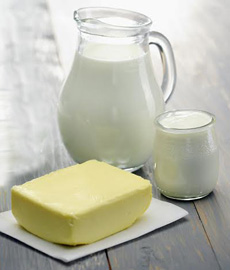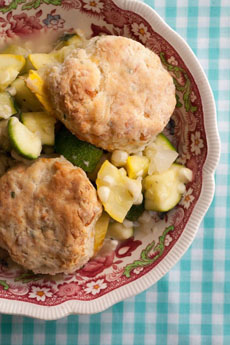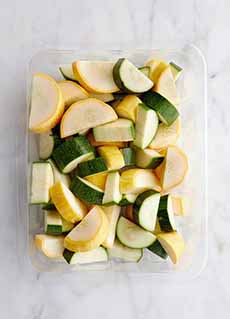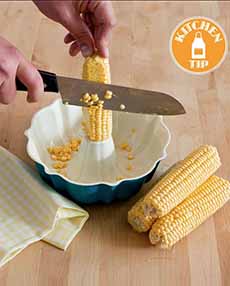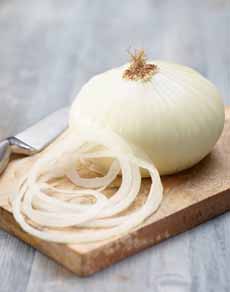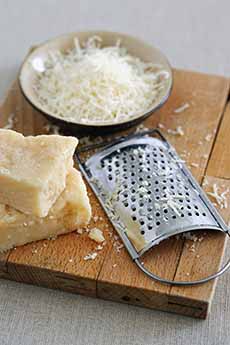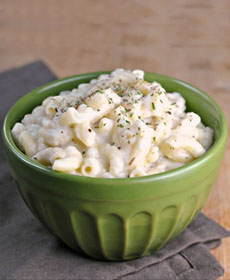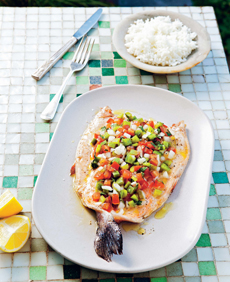| We never even thought of a savory cobbler before seeing this recipe from Taylor Takes a Taste on GoBoldWith Butter.com.A cobbler is a fruit dish cooked in a casserole. Shortcake batter or biscuit dough is dropped onto the fruit before baking. The dish got its name because the lumps of cooked dough resembled cobblestones.
So it’s a short leap to substitute vegetables for the fruit and have a delicious savory cobbler.
You don’t have to wait for the warm weather to make this Summer Squash Cobbler. It makes a great side dish for a weekday family meal or a large gathering. You can add optional chicken, ham, tofu, or other protein cubes.
In the original recipe, zucchini, yellow squash, and sweet summer corn are sautéed with onions and tossed with Parmesan cheese. You can substitute winter vegetables in the off-season.
This delicious filling is then topped with a layer of buttery cheddar and chive biscuits. Any leftovers are delicious the next day.
For this recipe, prep time is 30 minutes, and cook time is 1 hour, 10 minutes.
> The history of squash.
> The history of zucchini.
> The history of cobbler.
> The history of biscuits.
> Crisp, crumble, cobbler, betty, buckle, and more: the difference.
RECIPE: SUMMER SQUASH COBBLER
Ingredients For 8 Servings
For The Squash Mixture
- 5 cups chopped zucchini (bite size pieces)
- 5 cups chopped yellow squash (bite size pieces)
- 2 cups fresh corn kernels (you can substitute something else when corn is not in season—edamame, lima beans, peas, etc.)
- 3/4 cups chopped Vidalia or other sweet onion
- 4 tablespoons unsalted butter, plus extra for casserole pan
- 2 tablespoons chicken stock
- 1 tablespoon fresh lemon juice
- 3/4 teaspoon salt
- 1/4 teaspoon coarse ground pepper
- 1/2 cup grated Parmesan cheese
- 2 tablespoons all-purpose flour
- Optional: 2 cups cubed ham or other protein
For The Biscuits
- 4 cups self-rising flour
- 1/8 teaspoon cayenne pepper
- 2 cups grated white cheddar cheese
- 8 tablespoons unsalted butter, cold
- 2 tablespoons chopped fresh chives
- 1-1/2 to 1-3/4 cups buttermilk
Preparation
1. PREHEAT oven to 400°degrees. Butter a 9×13 casserole dish. Set aside.
2. MELT melt 4 tablespoons of butter in a large nonstick skillet over medium heat. Add onions and cook, stirring frequently, until onions are soft. Raise heat to medium-high and add zucchini and yellow squash. Stirring constantly, cook the squash for 5 minutes.
2. ADD corn, chicken stock, lemon juice, salt, and pepper. Reduce heat to medium and cook vegetables, stirring frequently for 5 minutes. Remove vegetables from heat and let them cool to room temperature. While vegetables are cooling…
3. MAKE the biscuit dough. Place the self-rising flour in a large bowl. Add the cayenne pepper. Stir until the flour mixture is well blended. Cut cold butter into 16 pieces and add to the flour mixture. Using a pastry blender or two forks, cut the butter into the flour until it resembles a coarse meal. Add the grated cheese and chives to the flour mixture and stir until well-mixed.
4. MAKE a well in the center of the flour. Add 1-1/2 cups of buttermilk and pull the flour from the sides of the bowl toward the center. Stir until the dough starts to form. If the mixture seems too dry, add additional buttermilk.
5. KNEAD the dough in the bowl for 2 or 3 turns until a ball forms. Remove dough from the bowl and place on a floured surface. Pat dough out into a rectangle that is about 1/2-inch thick. Let the dough rest for a moment while preparing cobbler filling.
6. MIX the Parmesan cheese and flour together in a small bowl. Add the Parmesan mixture to the cooled squash mixture and stir to blend. Empty the squash filling into the prepared casserole pan, smoothing it into even layer.
7. CUT the biscuit dough into circles. Place the biscuits on the surface of the squash so that the edges of the biscuits are just touching each other.
8. BAKE the cobbler at 400°F for 15 minutes. Reduce the heat to 350°F and continue baking for 20 to 30 minutes, until the squash is soft. Cover the top of the cobbler with foil if the biscuits begin to brown too much.
9. REMOVE the casserole from the oven and let cool for 10 minutes. Serve. |

